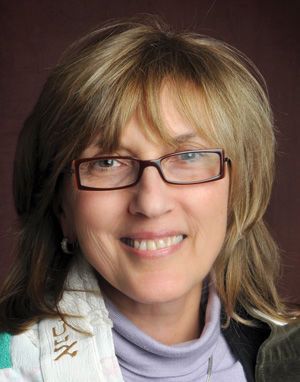‘Emor’ explores death as a sacred occasion
Published May 18, 2016
Emor tells us: “These are My fixed times; times set aside for Me, which you shall proclaim as sacred occasions for convocation.”
Emor is translated as “saying.” The word is mentioned more than 20 times in the portion. God spoke to Moses, saying, speak to either the Priestly persons or the children of Israel and tell them, “I Am.” Here, the expression “I Am” is simply saying “this is the way of it,” whether it’s serving the Holy of Holies, obligations to the deceased, preserving the sanctity of the community, or following the fixed times mentioned in the text.
What does time mean to us? Emor tells us to mark time and make time. The aged and infirm among us can speak about the ravages of time. In the words of Ecclesiastes, there is a time for every experience under heaven.
Emor opens saying that the priests of Israel must remain a respectful distance from a deceased person in order to preserve their availability to serve in the communal sacrificial rites. Close proximity to death disqualifies them for their work. The text is concerned with fixed festivals in Jewish time. Dying doesn’t have a fixed time, but the moment of death often is recorded and fixed. There is a rich, Jewish culture about death, and Emor provides an opportunity to explore this. In many respects, death can be proclaimed a sacred occasion for gathering.
There are many, many portrayals of a soul’s journey in Judaism, none of which can stand as a truth for all. There is a tradition about the measure of a person through the qualities exemplified in a good life.
For some, as the proverb attests, the legacy of a good name is what lives on. For others, it centers on the quality of human relationships, lasting relationships that confirm their goodness and bring comfort to their families.
For some, believing in the immortality of existence in some other dimension brings a hopeful sense of continuity.
There are many speculations about what happens to the deceased after death. In early Jewish history, the dead were thought to go to an underground place for the dearly departed. They didn’t suffer and could occasionally be summoned from the depths for “interviews.”
Over time, Jewish speculation added the existence of an immortal soul that lived on in something called the World to Come. Any description of this next world remains deliberately vague, as the rabbis remind us over and over again that we can never know with certainty what lies beyond the grave.
They did speculate among themselves, however. In their worldview, the World to Come was a dispassionate place where the righteous basked in the light of the Divine or a place that required absolutely no physical effort as illustrated by this description:
In this world there is the trouble of treading and harvesting grapes, but in the World to Come, a man will bring one grape on a wagon or a ship, put it in the corner of his house, and use the grape’s contents as if it were a wine cask, while its timber (the stalk) will be used as fire for cooking.
The rabbis of the Talmud speculated about who went where, why and for how long. The thoroughly righteous would go directly to a version of the Garden of Eden, and the thoroughly wicked to Gehinna — a place for purifying the soul.
The in-betweeners would undergo a purification process and then ascend to the Garden of Souls. The length of time for this process varied. One school of rabbinic thought mentioned a year’s time. Another suggested it was only 49 days as a reflection of the spiritual connection to the counting of the omer between Passover and Shavuot.
Kabbalists of the 13th to 15th centuries postulated that each person has a tripartite soul comprised of a nefesh, ruach, and neshama. All three are derived from the Creation story, and each aspect has a different destiny after death. Their journey, sufferings and ascension to the higher realms end with their reunification and being clothed in a luminescent garment woven from the zeal and devotion the individual brought to study and good deeds. From there, it ascends to be bound up in the Source of Life and is destined to reincarnate.
Emor tells us that death is a distinct domain with significance for both an individual and a community. It reminds us to make time for this important work of self-inquiry and discovery about our own feelings and thoughts on the matter. It is part of the sacred occasion that death brings to our gatherings.















